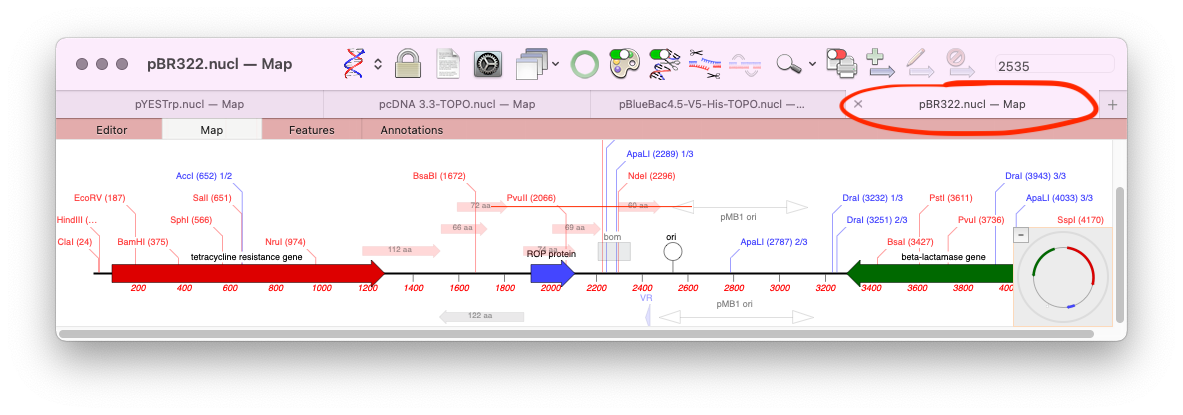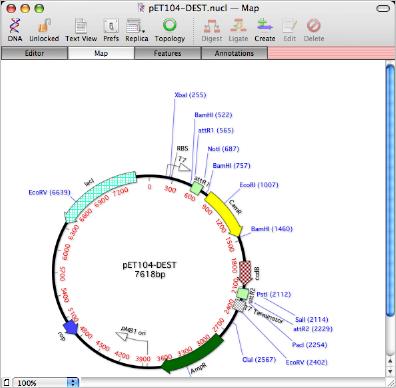Category: Tips
-

macOS’s tabbed windows and MacVector
One of the lesser known features of macOS is the ability to store all open documents of an application in tabs. Tabs were initially introduced for the Finder, but macOS Mavericks saw them apply to supported application document windows too. MacVector has supported tabs since their introduction, however, by default the Tab Bar is turned…
-

MacVectorTip: Identifying, Selecting and Assembling NGS reads with a variant genotype
When analyzing/assembling/aligning NGS data, there are many scenarios where you might want to separate out the reads representing different genotypes or variant sequences. MacVector makes this very easy. Take a reference sequence and choose Analyze | Align to Reference. Now click the Add Seqs button and select and add your NGS data files. NOTE: if…
-
MacVectorTip: Trimming trace files by quality
Many of our users are familiar with the ability of Sequencher to semi-automatically trim poor quality sequences from the ends of Sanger ABI reads. Although it is generally not necessary to do this in MacVector because most of the algorithms can automatically handle poor quality data, there are times when it can be beneficial. So…
-

MacVectorTip: How to copy a specific short amino acid translation of a sequence
There can be times when you are messing around with open reading frames, inserting residues to change frames to try to get the perfect CDS fusion. The MacVector single sequence Editor will show those (click and hold on the “Display” toolbar button) but if you select and copy, only the DNA sequence (with any overlapping…
-
MacVectorTip: How to find Restriction Enzymes that only cut outside of a specific region
One common cloning related task is to ask MacVector to find restriction enzyme sites that cut in a molecule, but that do not cut in a specific region. e.g. suppose you want to find restriction enzymes that cut pBR322 but that do not cut in the Tetracycline Resistance Gene. There are multiple ways to do this…
-
MacVectorTip: Simulating mixed plasmid populations in agarose gels
We had a recent support call this week from somebody who believed from their agarose gels that they had a mixed population of plasmids from an experiment and wanted to document and determine the banding pattern using MacVector’s agarose gel simulation. You might come across this type of scenario if you have been making site-specific…
-
MacVectorTip: Designing Primers for Gibson Assembly
You can use MacVector to design primers for multi-fragment Gibson Assembly, and also generate the predicted recombinant DNA molecule resulting from the assembly. All you have to do to get started is choose the File->New->Gibson/Ligase-independent Assembly… menu item. From there, you can choose the type of assembly (it doesn’t have to be the usual 5’…
-
MacVectorTip: Sign up for an NCBI API key to speed up BLAST results
MacVector has a very cool BLAST Map results tab that displays the annotations surrounding any hits from the selected database. Particularly if you are working with prokaryotic sequences, where most BLAST hits these days are to genome sequences. This can really help you see the context of your hits, and let you download just the…
-
MacVectorTip: displaying CRISPR PAM Sites on a sequence
CRISPR-Cas9 genetic editing mechanisms require a short (typically 20nt) RNA sequence complementary to a target site next to a Protospacer Adjacent Motif (PAM) sequence. The most commonly used Cas9 nuclease (SpCas9) from Streptococcus pyogenes recognizes the PAM sequence NGG. One new function introduced a few years ago will search for PAM sequences in your sequence.…
-
MacVectorTip: visualizing shared domains in a protein alignment
MacVector has a domain-outlining facility for multiple sequence alignments, letting you easily visualize the relationships between features in aligned protein sequences.MacVector’s new multiple alignment file format retains the features/annotations from the sequences that are used to create the alignment. The colors of features from the individual sequence documents are used to outline the domains in…
